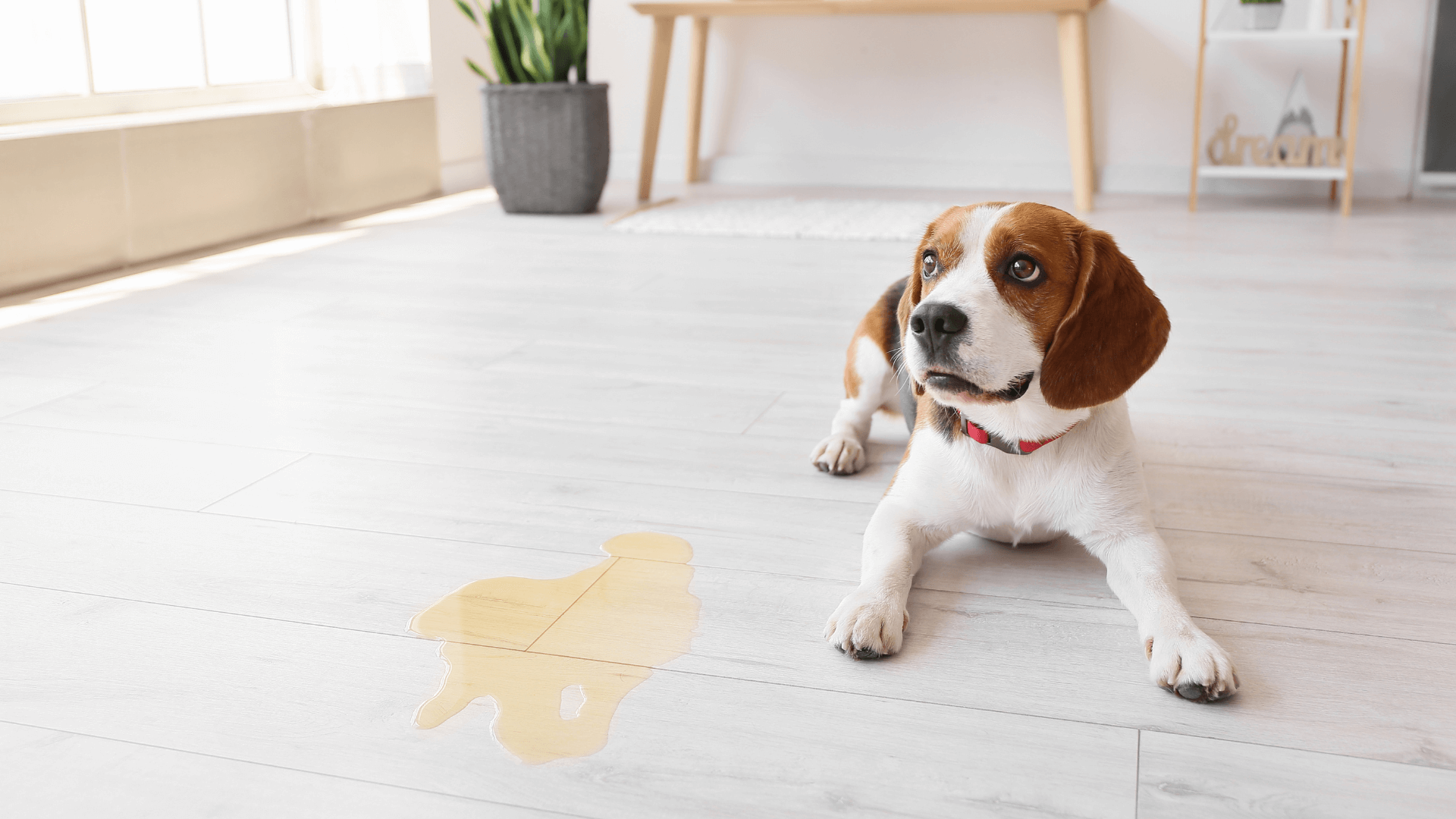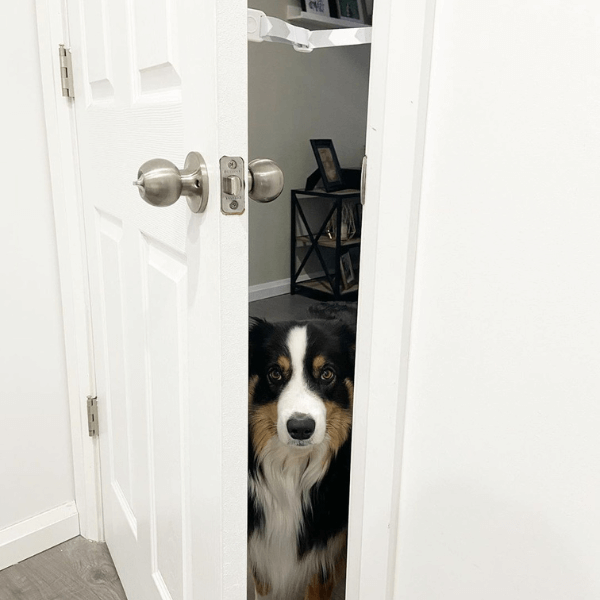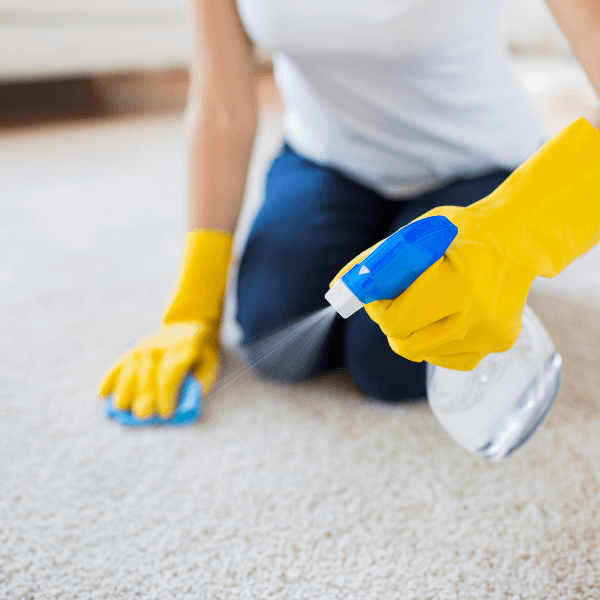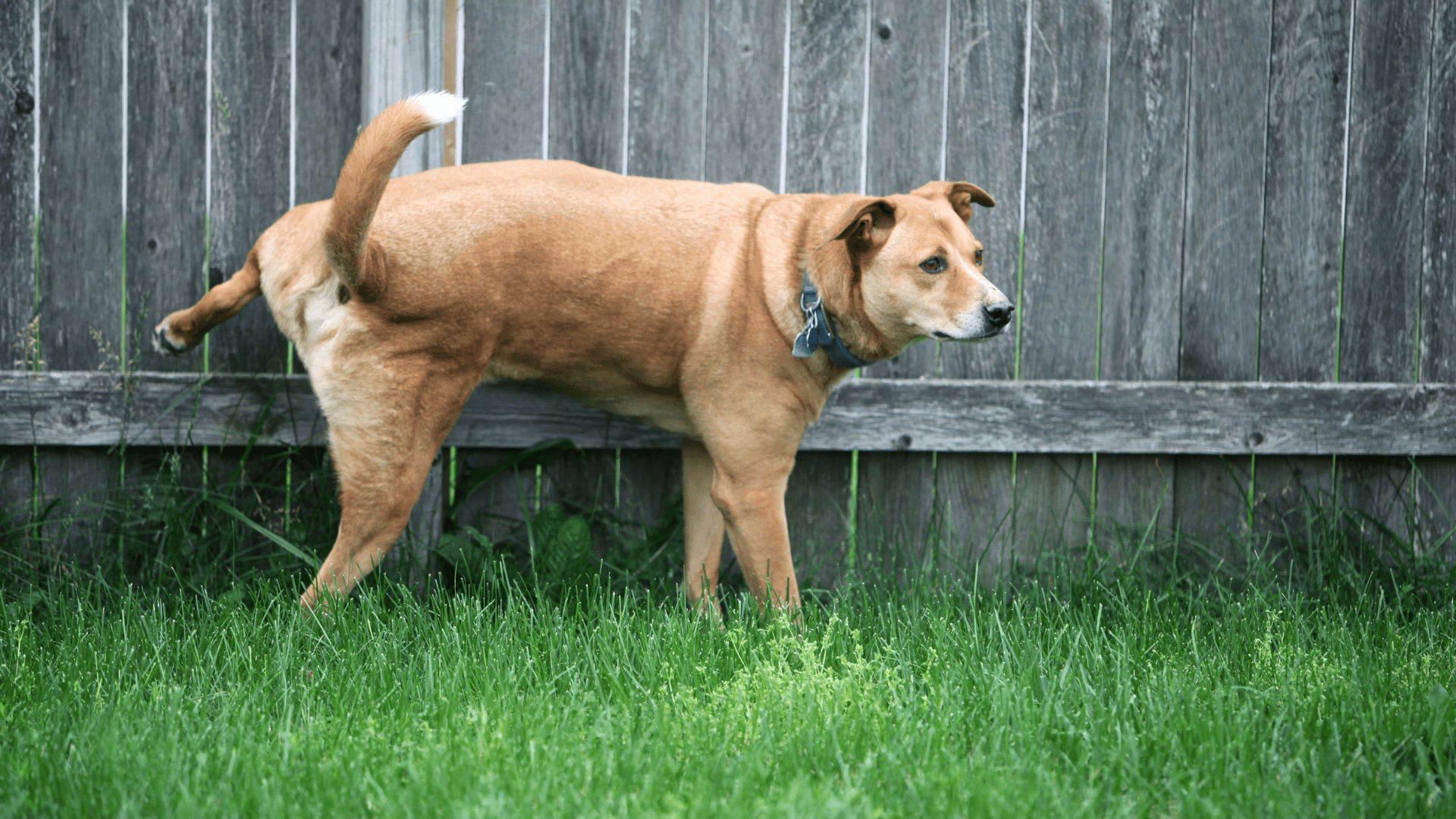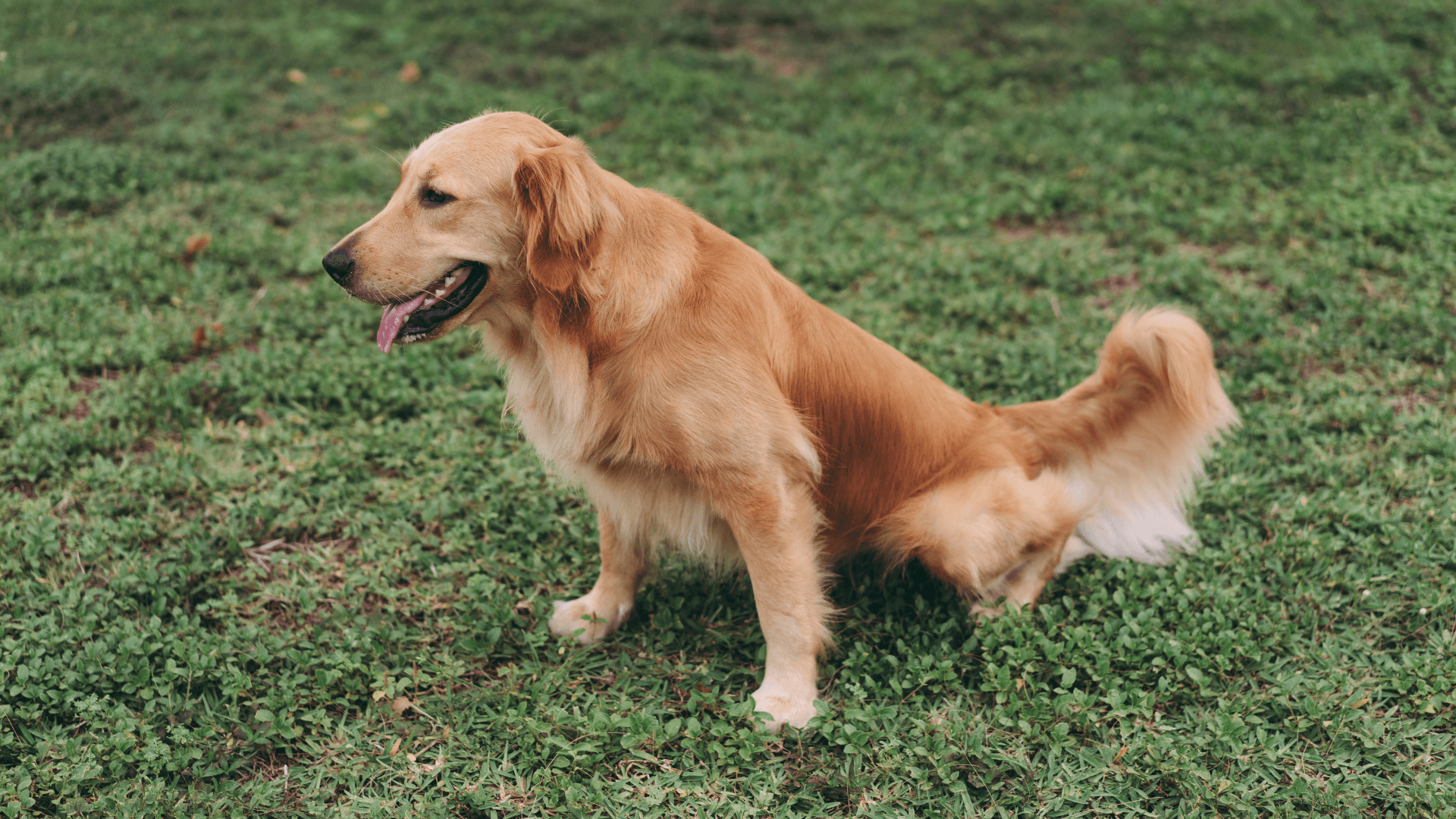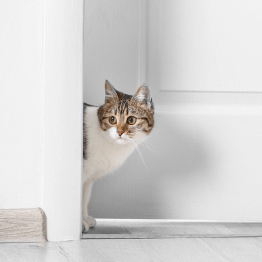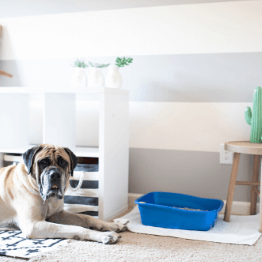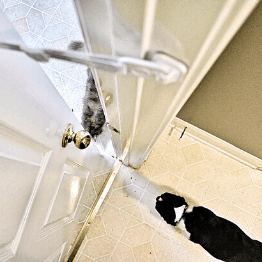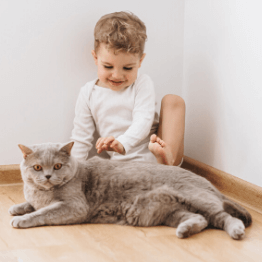HOW TO POTTY TRAIN AN OLDER DOG
If your search history is filled with 'how to potty train dog,' then this is the blog post for you! As dog owners ourselves, we know that nobody wants their adult doggo doing their business in the house. While accidents can happen, with the right training, your dog can learn where they can go and where they can't.
We're here to tell the pawrents of older dogs who aren't potty trained, don't worry - there is hope! Whether you have recently adopted an adult dog or are starting from scratch with a doggo you've had since a pup, we're here to help you learn how to potty train a dog that is older. With our tips for potty training older dogs, we'll help restore peace and cleanliness in your home in no time!
CHALLENGES OF POTTY TRAINING OLDER DOGS
When it comes to how to house train an adult dog, it is not without its challenges. While older dogs have larger bowels and bladders and better control of these parts than puppies, without a history of housetraining, these doggos also have a strong habit of pottying wherever and whenever they want. They might also find it hard to understand why the rules suddenly change.
Whether you have adopted an older dog or already own a well-trained dog, confusion around how house training in your home works is always a challenge you might face when considering how to house train an adult dog. If you have recently moved homes, you might also find your dog doing its business in your home instead of outside. We're here to help you overcome these issues with the right training!
PREPARING TO POTTY TRAIN AN ADULT DOG
Successfully learning how to potty train a dog that is older has a lot to do with your preparation. Taking the time to ensure that you, your home, and your doggo are ready will help ensure success! Take note of these tips:
Create a Confinement Space
This is an area where your dog will stay between its potty breaks. It prevents your doggie from roaming around the house, and peeing or pooping where they aren't allowed.
If your dog is crate trained, you can put it there during the waiting periods.
If not, block off a small room, such as the kitchen or bathroom (tile is easier to clean in case of accidents), or create a free-standing confinement area.
Door Buddy is great for doing this! Keep your dog in this space any time you're not supervising them.
Set up a 'Permissible Bathroom' for your Dog
Let's face it; if your dog needs to go, it must go. There may be situations where your doggy has to be left alone for longer than they can hold it, so it's important to give them a legal bathroom. Wee pads work really well for this. They give your furbaby a better option than just using the floor (less cleaning up for you).
If you live in an apartment and don't have access to a garden, you can also put a grass patch on your patio or try an indoor dog potty. This will help provide your doggie with a spot just for their potty needs and make things easier for you!
Clean Up Accidents Thoroughly
If you're reading this blog, chances are your dog has pooped or peed somewhere in your home before.
Dogs can smell the odor from previous accidents and are often inclined to use that same spot again the next time they need to do their business.
By cleaning accidents thoroughly using a spray for potty training dogs, you're removing the smells and helping avoid future mishaps.
Learning how to potty train a dog that is older takes time and patience, but being well-prepared will make the process that much easier.
HOW TO POTTY TRAIN AN OLDER DOG IN 4 STEPS
Right, now that you're prepared, we're ready to begin with the potty training! Whether you're going to potty train dog with bell or use a spray for potty training, these basic steps will help guide you and your doggo on your journey. By following these steps, you will also be able to create a potty training schedule for dogs that actually works!
Step 1: Take Hourly Potty Breaks During the Day
This is the first step to start your potty training journey. Although taking your dog out every hour might seem like a lot, it's all part of the process. Take your dog outside to their designated potty area, and wait 5 minutes for them to relieve themself. Give them treats and praise if or when they do.
If your dog does not go, take them back inside to their designated area and try again 15 minutes later. Repeat this process until they go.
Step 2: Allow for Some Playtime After Potty Time
You want your doggo to have a paws-itive association with their potty time, and allowing for some playtime after they have done their business is the purrfect way to achieve these. Spend at least 10 minutes outdoors after your dog relieves itself, and have some fun with your bud!
Step 3: Provide Playtime when Returning Indoors
You don't want your furbaby to associate going outdoors with being immediately created once they return inside. We suggest allowing them 15-20 minutes of supervised playtime when you return to your home before returning them to their designated area. Doing this makes your doggo more likely to be happy to go out and potty when you want it to.
Step 4: Repeat Steps 1-3 Throughout the Day
Potty training older dogs is a process, and repeating these steps will help you and your dog develop a routine that works. By keeping track of when your dog potties, you will also be able to create a potty training schedule for dogs, just like this one for puppies. It is best to start the training over a weekend when you will be at home. If you work in an office during the week, see if you can get a neighbor or dog walker to help take your dog out every 3-4 hours.
Once you've tracked your dog's potty times and created your potty training schedule for dogs, you might not need to go out so often if your dog only needs to relieve themselves at certain times during the day. If your dog responds well to this training, you can try to potty training dog with bell.
POTTY TRAINING TIPS FOR PAWRENTS
You've now got all the information you need to help potty train an older dog, but we're not done yet! We've got a few more tidbits to share with you that'll make the training process smoother for every-pawdy:
Don't punish your dog when they have an accident. Although it can be frustrating, rather clean it and pretend nothing happened. If you do punish your dog, they might start hiding their pees from you around the house.
Take advantage of your doggos instinct to scent mark. Collect your dog's pee (or something they have peed on) and sprinkle or rub it in the area you'd like your dog to go. Next time you take your dog there, let it sniff – it will almost certainly urinate.
Potty training dogs at any age takes time. Have patience, and you'll get there together.
We hope you're feeling a little more confident about learning how to potty train an older dog. Armed with these steps and our top tips, we've no doubt that you and your best bud will have this whole thing mastered in no time!


